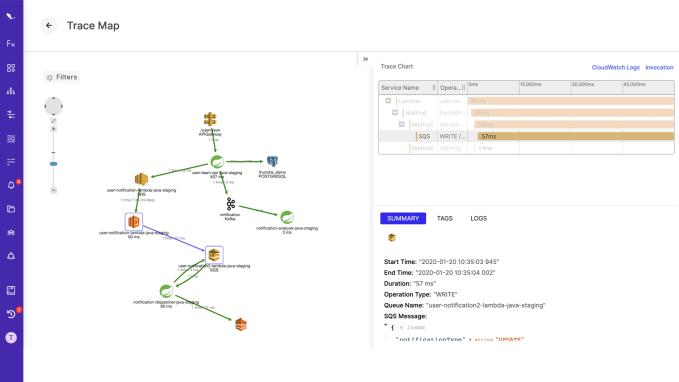Thundra, an early stage serverless tooling startup, announced a $4 million Series A today led by Battery Ventures. The company spun out from OpsGenie after it was sold to Atlassian for $295 million in 2018.
York IE, Scale X Ventures and Opsgenie founder Berkay Mollamustafaoglu also participated in the round. Battery’s Neeraj Agarwal is joining the company’s board under the terms of the agreement.
The startup also announced that it had recently hired Ken Cheney as CEO with technical founder Serkan Ozal becoming CTO.
Originally, Thundra helped run the serverless platform at OpsGenie. As a commercial company, it helps monitor, debug and secure serverless workloads on AWS Lambda. These three tasks could easily be separate tools, but Cheney says it makes sense to include them all because they are all related in some way.
“We bring all that together and provide an end-to-end view of what’s happening inside the application, and this is what really makes Thundra unique. We can actually provide a high-level distributed view of that constantly-changing application that shows all of the components of that application, and how they are interrelated and how they’re performing. It can also troubleshoot down to the local service, as well as go down into the runtime code to see where the problems are occurring and let you know very quickly,” Cheney explained.
He says that this enables developers to get this very detailed view of their serverless application that otherwise wouldn’t be possible, helping them concentrate less on the nuts and bolts of the infrastructure, the reason they went serverless in the first place, and more on writing code.

Serverless trace map in Thundra. Screenshot: Thundra
Thundra is able to do all of this in a serverless world, where there isn’t a fixed server and resources are ephemeral, making it difficult to identity and fix problems. It does this by installing an agent at the Lambda (AWS’ serverless offering) level on AWS, or at runtime on the container at the library level,” he said.
Battery’s Neeraj Agarwal says having invested in OpsGenie, he knew the engineering team and was confident in the team’s ability to take it from internal tool to more broadly applicable product.
“I think it has to do with the quality of the engineering team that built OpsGenie. These guys are very microservices oriented, very product oriented, so they’re very quick at iterating and developing products. Even though this was an internal tool I think of it as very much productized, and their ability to now sell it to the broader market is very exciting,” he said.
The company offers a free version, then tiered pricing based on usage, storage and data retention. The current product is a cloud service, but it plans to add an on prem version in the near future.